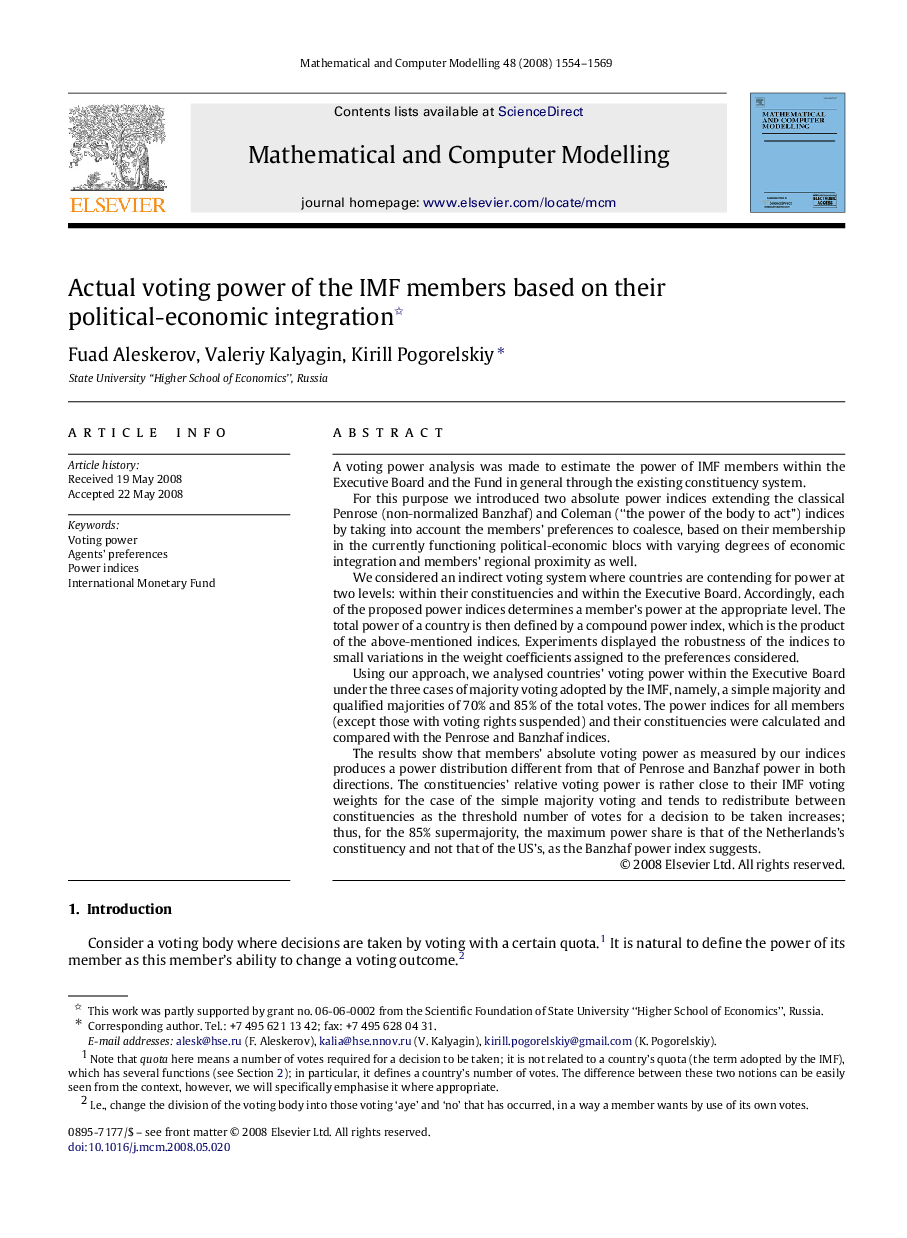| کد مقاله | کد نشریه | سال انتشار | مقاله انگلیسی | نسخه تمام متن |
|---|---|---|---|---|
| 1137631 | 1489188 | 2008 | 16 صفحه PDF | دانلود رایگان |

A voting power analysis was made to estimate the power of IMF members within the Executive Board and the Fund in general through the existing constituency system.For this purpose we introduced two absolute power indices extending the classical Penrose (non-normalized Banzhaf) and Coleman (“the power of the body to act”) indices by taking into account the members’ preferences to coalesce, based on their membership in the currently functioning political-economic blocs with varying degrees of economic integration and members’ regional proximity as well.We considered an indirect voting system where countries are contending for power at two levels: within their constituencies and within the Executive Board. Accordingly, each of the proposed power indices determines a member’s power at the appropriate level. The total power of a country is then defined by a compound power index, which is the product of the above-mentioned indices. Experiments displayed the robustness of the indices to small variations in the weight coefficients assigned to the preferences considered.Using our approach, we analysed countries’ voting power within the Executive Board under the three cases of majority voting adopted by the IMF, namely, a simple majority and qualified majorities of 70% and 85% of the total votes. The power indices for all members (except those with voting rights suspended) and their constituencies were calculated and compared with the Penrose and Banzhaf indices.The results show that members’ absolute voting power as measured by our indices produces a power distribution different from that of Penrose and Banzhaf power in both directions. The constituencies’ relative voting power is rather close to their IMF voting weights for the case of the simple majority voting and tends to redistribute between constituencies as the threshold number of votes for a decision to be taken increases; thus, for the 85% supermajority, the maximum power share is that of the Netherlands’s constituency and not that of the US’s, as the Banzhaf power index suggests.
Journal: Mathematical and Computer Modelling - Volume 48, Issues 9–10, November 2008, Pages 1554–1569